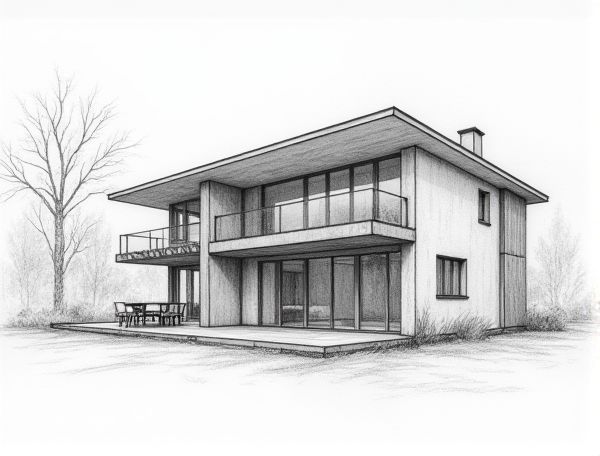
Photo illustration: Passive house home design with triple-pane windows
Passive house home design emphasizes energy efficiency and comfort, using triple-pane windows to significantly reduce heat loss and improve insulation. Explore how incorporating these advanced windows can enhance your home's sustainability and indoor climate by reading more in the article.
Introduction to Passive House Home Design
Passive House home design emphasizes exceptional energy efficiency through airtight construction, high insulation, and advanced ventilation systems. This approach significantly reduces heating and cooling demands, resulting in lower utility bills and increased indoor comfort. By choosing Passive House design, your home maximizes sustainability while maintaining superior air quality and thermal consistency year-round.
Key Principles of Energy-Efficient Living
Maximizing natural light through strategically placed windows and utilizing high-performance insulation significantly reduce energy consumption in home design. Incorporating energy-efficient appliances and smart thermostats enhances sustainability while maintaining comfort and reducing utility costs.
The Role of Insulation in Passive Houses
High-performance insulation in passive houses significantly reduces heat transfer, maintaining consistent indoor temperatures and minimizing energy consumption for heating and cooling. Using materials such as cellulose, mineral wool, or rigid foam panels enhances thermal resistance (R-values), improves airtightness, and contributes to superior energy efficiency and occupant comfort.
Importance of High-Performance Windows
High-performance windows significantly enhance your home's energy efficiency by reducing heat loss and minimizing drafts, which lowers utility bills. These windows offer superior insulation through advanced glazing technologies and durable frames, maintaining consistent indoor temperatures year-round. Prioritizing high-performance windows improves comfort, increases property value, and supports sustainable living.
Triple-Pane Windows: Features and Benefits
Triple-pane windows feature three layers of glass separated by insulating gas-filled spaces, significantly enhancing thermal performance and soundproofing in home designs. Their advanced energy efficiency reduces heating and cooling costs while improving indoor comfort and reducing noise pollution.
Thermal Comfort and Indoor Air Quality
Effective home design prioritizes thermal comfort by integrating advanced insulation materials, energy-efficient HVAC systems, and smart ventilation controls to maintain consistent indoor temperatures. Indoor air quality is enhanced through the use of low-VOC building materials, air purifiers, and strategic placement of operable windows to facilitate natural airflow and reduce pollutants. Together, these elements create a healthier, more comfortable living environment that supports occupant well-being and energy efficiency.
Reducing Energy Costs with Triple-Pane Glazing
Triple-pane glazing significantly reduces heat loss by incorporating three layers of glass with insulating gas fills, enhancing your home's thermal efficiency. This advanced window technology not only minimizes energy consumption but also lowers utility bills, making it a smart investment for reducing your home's overall energy costs.
Design Strategies for Integrating Triple-Pane Windows
Triple-pane windows enhance energy efficiency by providing superior insulation and reducing heat loss, making them ideal for sustainable home designs. Their increased thickness requires thoughtful frame selection and may influence wall depth, so planning your window placement is essential to maintain aesthetic balance and structural integrity. You should consider natural light optimization and noise reduction benefits when integrating these windows into your interior layout.
Challenges and Considerations in Passive Home Construction
Designing a passive home requires careful attention to insulation quality, airtightness, and proper ventilation to maintain energy efficiency. You must consider site orientation, window placement, and thermal mass to optimize natural heating and cooling, while minimizing heat loss. Addressing these challenges ensures your passive home delivers comfort and sustainability with reduced environmental impact.
Future Trends in Passive House and Window Technology
Future trends in passive house design emphasize ultra-efficient window technology featuring triple-glazed, low-emissivity coatings and smart sensors to optimize natural light and thermal regulation. Your home's energy performance will significantly improve through the integration of airtight construction and innovative window frames that minimize heat loss while enhancing indoor comfort year-round.
 homedesy.com
homedesy.com